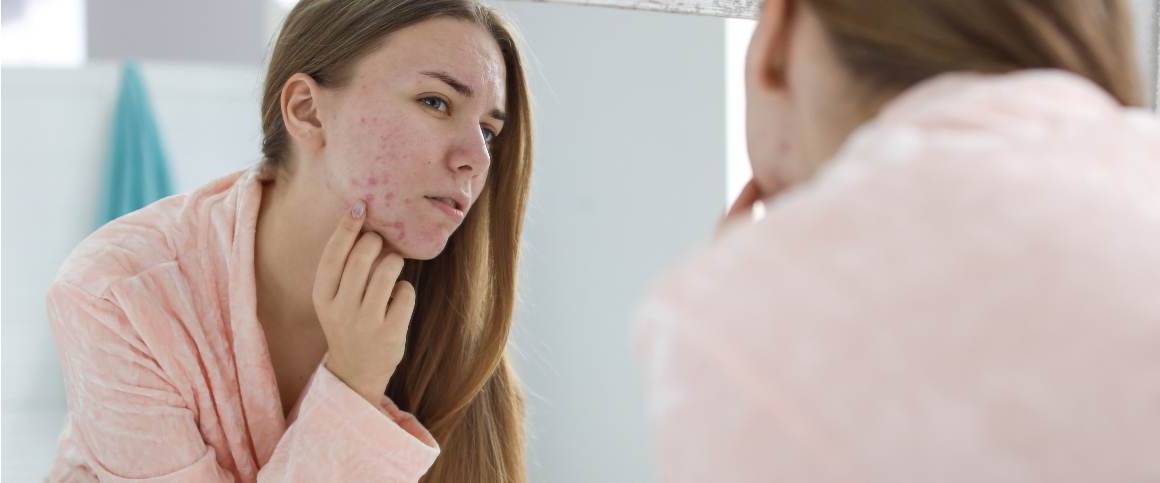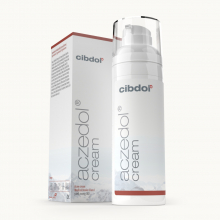Does Acne Come Back After Doxycycline?
Published:
Do you dread those red, swollen breakouts that tend to show up at the worst possible times? Acne can be frustrating, painful, and embarrassing. If you’ve tried over-the-counter creams and washes with no success, your dermatologist may have prescribed an oral antibiotic called doxycycline to clear your skin. But you may be wondering: does acne come back after doxycycline treatment?
Contents:
- How Doxycycline Works On Acne
- Does Acne Return After Stopping Doxycycline?
- How Long Does It Take For Acne To Come Back After Doxycycline?
- Can You Prevent Acne From Coming Back After Doxycycline?
- Maintaining Clear Skin After Doxycycline
- Frequently Asked Questions About Acne After Stopping Doxycycline
This is a common concern for acne sufferers who have found success with doxycycline. The idea of clear skin returning to a broken-out state can be upsetting.
The truth is, recurrence of acne after antibiotic treatment is possible. However, there are many things you can do to prevent acne from coming back.

How Doxycycline Works On Acne
Before we dive into what happens when you stop taking doxycycline, let’s look at how doxycycline treats acne in the first place.
Doxycycline is an oral tetracycline antibiotic that is prescribed to treat moderate to severe inflammatory acne. Doxycycline works by:
- Fighting acne-causing bacteria like Propionibacterium acnes (P. acnes)
- Reducing inflammation caused by acne bacteria
Doxycycline stops the growth and spread of P. acnes bacteria that clog pores and cause outbreaks. The antibiotic also has anti-inflammatory effects that help reduce the redness, swelling, and pain of pimples.
When taken daily as prescribed, doxycycline can significantly clear up blemish-prone skin. But acne improvement is gradual over weeks and months of use. Most dermatologists recommend taking doxycycline for at least 6 to 8 weeks to see full clearing benefits.
Does Acne Return After Stopping Doxycycline?
With consistent use, doxycycline can provide long-term clearance of acne for many patients. However, once doxycycline is stopped, there is a risk of acne symptoms returning.
Why does acne come back after doxycycline? There are a few reasons:
1. Doxycycline Is Not a Long-Term Acne Treatment
Doxycycline is considered a short-term solution for improving acne. The antibiotic treats active breakouts and reduces excess acne bacteria. But doxycycline does not address the underlying causes of acne formation.
Factors like excess oil production, clogged pores, poor skin cell turnover, and inflammation are still present after stopping doxycycline. When the antibiotic is no longer keeping acne bacteria in check, these unresolved acne triggers can lead to the return of breakouts.
2. Acne Bacteria Can Become Resistant to Doxycycline
With repeated or long-term use of any antibiotic, acne-causing bacteria can adapt and become resistant. Doxycycline may not keep working as effectively if P. acnes bacteria become doxycycline-resistant.
When you stop taking doxycycline, resistant P. acnes bacteria left behind can thrive again and lead to recurring acne.
3. Doxycycline May Alter Skin Microbiome Balance
Oral antibiotics like doxycycline reduce all bacteria, not just P. acnes. This disruption of the natural skin microbiome balance can allow overgrowth of acne bacteria once antibiotic use stops.
Without doxycycline continually lowering P. acnes levels, these bacteria rebound quickly and acne follows.
How Long Does It Take For Acne To Come Back After Doxycycline?
Most dermatologists recommend taking doxycycline for 12 to 16 weeks. If you take a short round of doxycycline, acne will likely recur within weeks after stopping.
With longer treatment of 6 months or more, it may take a few months for acne to return after doxycycline. But recurrence is still common.
Studies show acne recurs in 40% to 60% of patients within 3 to 4 months after stopping doxycycline.
The return of acne breakouts can be frustrating after seeing clear skin on doxycycline. But in most cases, acne after doxycycline will not be as severe as before starting treatment.
Can You Prevent Acne From Coming Back After Doxycycline?
While acne recurrence is a risk after stopping doxycycline, there are ways to help keep breakouts at bay:
1. Taper Doxycycline Gradually
Quitting doxycycline abruptly can shock your system and cause a rapid flare-up of acne. Instead, work with your dermatologist to slowly taper your doxycycline dose over 4 to 6 weeks. This gives your skin time to adjust.
2. Ask About Long-Term, Low-Dose Treatment
Some dermatologists continue doxycycline long-term at a lower maintenance dosage like 50 or 100 mg daily. This keeps acne bacteria suppressed with less risk of side effects.
3. Start Topical Acne Treatments
Apply prescription topical treatments like retinoids, benzoyl peroxide, or topical antibiotics when stopping oral antibiotics. This provides ongoing prevention against acne.
4. Take Oral Probiotics
Probiotic supplements can help restore balance to your skin’s microbiome after antibiotic use. A healthy microbiome resists overgrowth of P. acnes bacteria.
5. Improve Your Acne Skincare Routine
Use non-comedogenic makeup and oil-free skin care products. Wash your face twice a day and after sweating to keep pores clear. Avoid touching your face. These tips help prevent new acne breakouts.
6. Consider Isotretinoin (Accutane)
For some acne patients prone to relapse after antibiotics, the medication isotretinoin offers long-term clearing. Isotretinoin addresses acne at the root causes for more lasting results.
Maintaining Clear Skin After Doxycycline
While acne may recur after you finish your doxycycline prescription, there are many effective ways to care for your skin long-term. Work closely with your dermatologist to find the right acne maintenance plan.
With smart management, you can keep acne under control and continue enjoying the clear, confident skin you achieved with doxycycline. Don’t lose hope if you experience some acne returning post-antibiotics. Consistent skincare, lifestyle measures, and dermatologist follow-up can help you maintain your hard-won clear complexion.
Frequently Asked Questions About Acne After Stopping Doxycycline
What causes acne to come back after taking doxycycline?
Acne returns after doxycycline because antibiotics do not treat the underlying causes of breakouts. Factors like excess oil, clogged pores, bacteria, and inflammation are still present after antibiotics. When doxycycline is stopped, these triggers can lead to recurrence of acne symptoms.
Does doxycycline permanently cure acne?
No, doxycycline does not permanently cure acne. Doxycycline only temporarily suppresses acne by decreasing acne bacteria and inflammation. It does not address the root acne causes. Acne is likely to return after stopping doxycycline.
How long after finishing doxycycline before acne returns?
Most patients see acne recur within 1 to 4 months after stopping doxycycline treatment. Some experience breakouts within weeks while others may stay clear for up to 6 months post-antibiotics. The timeline varies between individuals.
Does doxycycline resistance cause acne to come back?
Yes, acne bacteria can adapt and become resistant to doxycycline after repeated or long-term use. Resistant bacteria are not killed off by doxycycline anymore. This can lead to acne returning after antibiotics are stopped.
Should doxycycline be taken until acne is completely gone?
No, doxycycline should be used for a limited period as prescribed by your dermatologist, usually 3-6 months. Taking doxycycline longer than needed increases the risks of antibiotic resistance and side effects. Acne will likely recur regardless of how long you take antibiotics.
Is it bad to stop doxycycline suddenly?
Stopping doxycycline abruptly can shock your system and cause acne to flare-up quickly. It’s best to gradually taper your dosage over 4-6 weeks under your dermatologist’s guidance. This allows your body to slowly adjust to being off antibiotics.
What can you do to prevent acne from coming back after doxycycline?
Using topical treatments, taking oral probiotics, gently tapering doxycycline, improving your acne skincare routine, and seeing your dermatologist regularly can help maintain clearer skin after finishing doxycycline.
Is it possible to stay clear after getting off doxycycline?
Yes, it’s possible but takes diligent acne care. Work closely with your dermatologist to find the right products, procedures and lifestyle habits to help prevent acne recurrence after antibiotics. Maintenance treatments are key to keeping breakouts away long-term.
What should you use if acne returns after doxycycline?
See your dermatologist about starting topical prescription medications like retinoids, benzoyl peroxide, or antibiotic creams. Oral probiotics and over-the-counter salicylic acid products may also help keep acne in check post-antibiotics.
Can you go back on doxycycline if acne returns?
You may be able to do another round of doxycycline later on if needed. But other oral antibiotics may be prescribed instead to avoid bacterial resistance. Long-term, isotretinoin is often the next line of defense after recurrent acne following doxycycline.
What are signs your acne is coming back after doxycycline?
Increased oiliness, blackheads and clogged pores, small pimples turning into larger inflamed breakouts, and frequent new blemishes, especially around the mouth/jawline, are signs acne is recurring after stopping doxycycline. See your dermatologist promptly if you notice these return.










